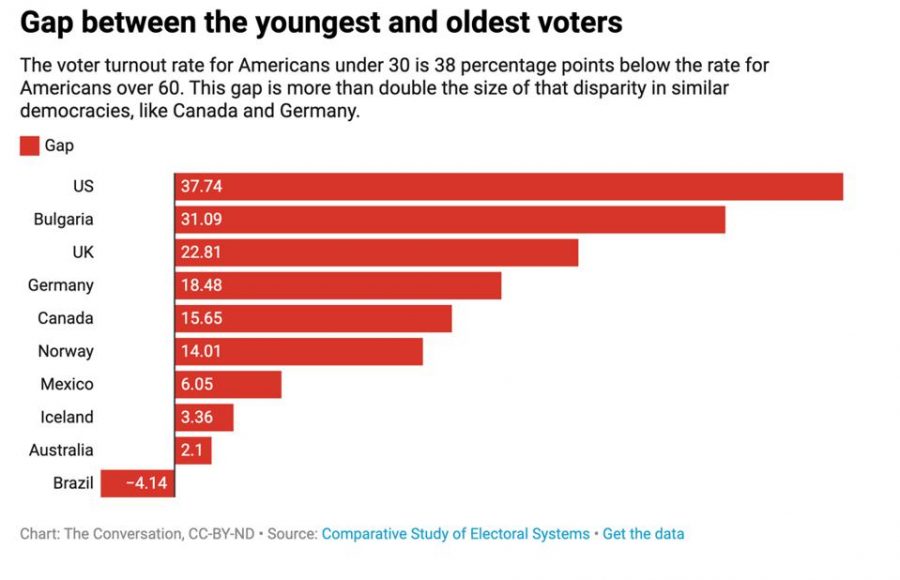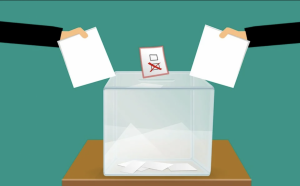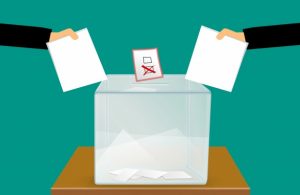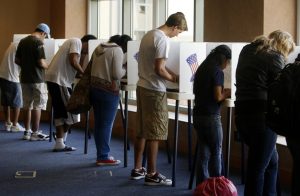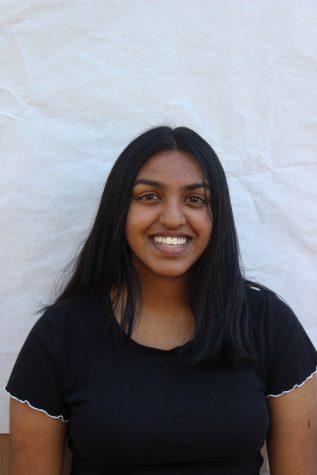State legislations restrict higher youth turnout
Forbes Magazine
The age gap between voters between countries is representative of youth voter turnout internationally.
August 4, 2020
Nine years ago, New Hampshire’s Republican House Speaker William O’Brien promised to end voter fraud, proclaiming “kids voting liberal, voting with their feelings, with no life experience.”
What followed were a series of restrictive voting laws that remain roadblocks to increasing America’s youth turnout rates. In late 2019, the ACLU of New Hampshire along with several students filed a lawsuit against the state, contending that the July 2019 law requiring any voter who intends to drive and vote to obtain a New Hampshire driver’s license and registration is adversely impairing student voters. According to a 2019 Guardian article, “while 1% of the total number of people who cast a ballot in New Hampshire in the 2016 general election used an out-of-state ID, at least 36% of the college students who voted used one.”
With the 2020 elections nearing, New Hampshire’s voting laws have been mirrored by numerous states, contributing to fears that the youth vote will be suppressed.
Historically, the youth have consistently presented the lowest turnout rates of any age demographic. Globally, America’s youth turnout levels are significantly lower than most developed nations. The gap between turnout of citizens aged 60+ and 18-29 — a metric widely used to measure youth participation in voting — is more than twice the size in America than in comparable democracies such as Germany and Canada. While youth voting spiked in the 2018 midterms marking a 100-year high, turnout still only reached 36%.
And while many are quick to point to political apathy as the reason, new lines of research suggest that legislative barriers may play the dominant role in this trend.
Youth are significantly more likely to become derailed by complicated voting laws or changes in procedures. A 2011 study from the American Political Science Review studied the impact of changing the location of polling places on turnout, concluding that younger voters were impacted adversely. And constant changes to voting laws in North Carolina have been connected with decreased youth turnout and even less advocacy work of youth turnout groups. This is corroborated by a 2016 article in the Journal of American Political Science which found that when states implemented policies such as pre-registration and solved for complicated voting processes, youth turnout spiked upward.
Immediately following the 2018 midterms and the surge in youth voters — overwhelmingly left-leaning —, Republican representatives in state legislatures across the country began passing laws that disproportionately hurt youth voters. Specifically, by targeting on-campus voting, states such as Texas and Florida have magnified the impact that unclear voting laws and changing polling station locations have on youth. In 2019, just three weeks before the state’s elections, Texas outlawed polling places that did not remain open for the state’s entire 12-day early-voting period, adversely hurting campus polling centers without the resources to remain open for the whole period. Just Austin Community College’s nine campuses alone logged almost 14,000 ballots in 2018. The closure of polling stations on these campuses among other colleges through Texas make it significantly more difficult for students to vote and further heighten the trends mentioned earlier.
Texas is not an isolated example.
In 2014, Florida’s secretary of state outlawed early-voting sites at state universities. Reports quantified that 60,000 students voted on campuses in 2018 after the law was overturned by a federal court. However, in 2019, Florida added a clause to their election laws that required early-voting sites to provide non-permitted parking, difficult for most college campuses to offer. A New York Times article from 2018 notes that rules such as these and the ones implemented in Texas harm college voting efforts uniquely, capitalizing on their limited resources to suppress student access to voting.
Aside from Florida and Texas, in 2019 North Carolina, Tennessee, New Hampshire and Wisconsin all adopted stricter voter ID laws that left the majority of universities unable or unwilling to certify student IDs under the new cumbersome regulations.
When questioned about the purpose behind these laws, proponents commonly cite “reducing voter fraud” as a justification. Yet statistically, voter fraud remains a nearly negligible problem. A 2014 Washington Post study quantified that between 2000 and 2014 there were only 31 credible instances of fraud out of the more than 1 billion votes. And the Brennan Center for Justice notes that even “this tiny number is likely inflated, as the study’s author counted not just prosecutions or convictions, but any and all credible claims.”
But while instances of voter fraud are nearly non-existent in American history, the past of state governments masking laws that unfairly target youth voters under the guise of solving this microscopic threat is not.
And it is understandable why Republicans may be fearful. When the student vote nearly doubled between 2014 and 2018, political scientists viewed it as a shift in the favor of Democrats. Young voters are more likely to prioritize issues such as climate change and health care. And with growing evidence suggesting that candidates mirror their policies with those of voters, rising youth turnout has the potential to benefit Democratic candidate chances in the 2020 election and beyond.
Especially in the upcoming election, the youth vote is essential. In the projected close election this fall, many states could shift the balance purely by their student population. In 2016, President Trump won Wisconsin by less than 23,000 votes. To put that into perspective, the University of Wisconsin alone is home to over 170,000 students.
While many suggest that the true root cause behind reduced turnout among youth is widespread political apathy, research from as early as 2000 suggests that younger generations are some of the most politically-engaged and interested demographics in America. Professor Hillygus from Duke University and Assistant Professor Holbein from the University of Virginia quantify that “Since 2000, 76% of young people say they are interested in politics and 74% say they care who gets elected. And here’s the kicker: Before elections, a full 81% of young people say they intend to vote.”
Laws preventing student involvement aren’t just an inconvenience; they’re an active threat to America’s democracy. And entertaining these absurd overreaches should not be tolerated.
As youth, we must be aware of these barriers and commit to overcoming them. In fact, new research suggests that personally reminding our immediate circle of friends and families to vote is possibly the most effective way to boost turnout.
Ultimately, the ballot box has always been a pathway for change in America. It is a place for the average American to have a say in our country’s future. While these policies are by no means fair, they can and have been challenged. Florida passed new clauses in 2019 because their old ones were deemed unconstitutional. And as the ACLU and students take on New Hampshire ID, the youth voice is being amplified. As long as we as youth continue to remain aware of these inequalities and fight for meaningful reform, history suggests that we can and will be heard.


